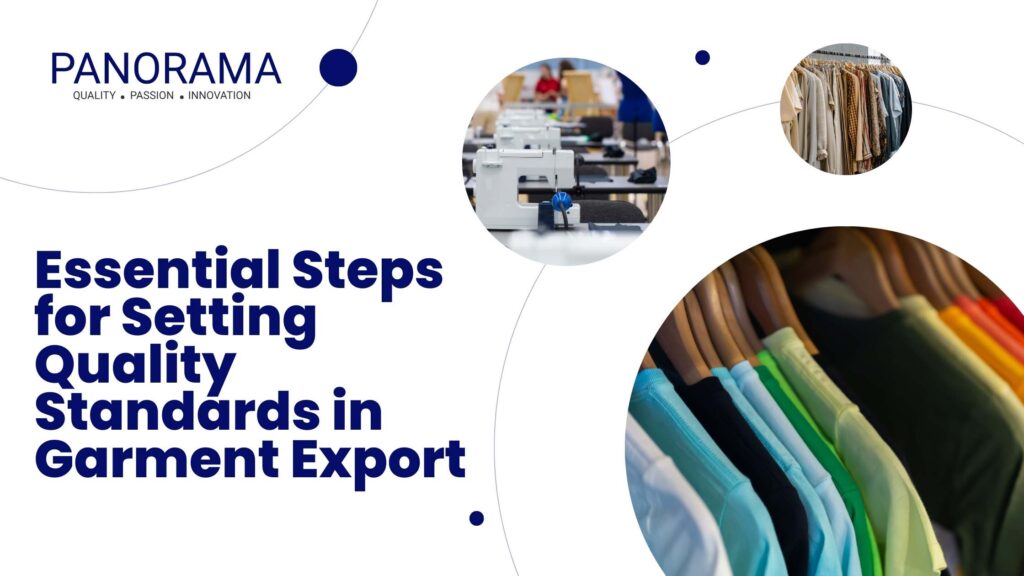Quality standards in garment export are the bedrock of the fashion industry, ensuring that apparel meets stringent criteria before reaching global markets. It encompasses meticulous processes and benchmarks to guarantee products adhere to the highest quality measures.
Definition of Quality Standards in Garment Export
Quality standards refer to the set criteria and parameters that garments must meet regarding design, durability, safety, and regulatory compliance before export.
Importance of Setting Quality Standards
Quality standards serve as a hallmark of reliability, impacting a brand’s reputation and customer satisfaction, thereby influencing market acceptance and brand loyalty.
Understanding the Significance of Quality Standards
Role in the Global Fashion Industry
Quality standards are the cornerstone of the fashion industry, shaping the perception of brands and products in the global marketplace.
Impact on Brand Reputation and Customer Satisfaction
Maintaining stringent quality standards ensures customer satisfaction, fosters trust, and solidifies a brand’s reputation, leading to sustained success in the competitive market.
Recognizing Regulatory Frameworks and Industry Norms
Overview of International Regulations
Understanding and complying with local and global regulations, including labeling requirements and safety standards, are crucial in ensuring adherence to quality benchmarks.
Utilizing Industry-Specific Standards
Recognizing and aligning with industry-specific standards such as the ISO 9000 series and those established by textile associations provide extensive quality benchmarks.
Establishing Internal Quality Standards
Defining Criteria for Fabric Quality
Detailed specifications for fabric quality are vital, ensuring materials meet specified durability and performance standards.
Specifications for Stitching and Design
Meticulous parameters for stitching, design, and finishing ensure products meet design aesthetics and structural integrity.
Parameters for Sizing and Colorfastness
Setting criteria for sizing consistency and colorfastness maintains uniformity and quality across garment batches.
Alignment with Best Industry Practices and Customer Expectations
Aligning internal standards with industry best practices and customer expectations ensures products meet or exceed market demands.
Collaborating with Supply Chain Partners
Communicating Quality Requirements to Suppliers
Effective communication with suppliers regarding quality requirements is fundamental in maintaining consistency throughout the supply chain.
Ensuring Understanding and Adherence throughout the Manufacturing Process
Ensuring that suppliers comprehend and adhere to established quality criteria guarantees uniformity in the manufacturing process.
Developing Testing Protocols
Importance of Testing Different Quality Parameters
Rigorous testing for fabric strength, color fastness, dimensional stability, and other parameters is crucial in ensuring product durability and performance.
Fabric Strength, Color Fastness, Dimensional Stability Studies, etc.
Determining the frequency of testing and specific requirements for each product category guarantees adherence to quality benchmarks.
Certifications, Audits, and Compliance Checks
Acquiring Relevant Certifications
Obtaining certifications such as ISO and OEKO-TEX showcases a brand’s commitment to quality and compliance.
Navigating Audits to Prove Compliance with Quality Standards
Undergoing regular audits verifies adherence to quality standards, ensuring continuous improvement and credibility.
Integrating Customer Feedback
Leveraging Customer Input for Quality Improvements
Utilizing data-driven strategies derived from customer feedback aids in identifying recurring quality issues, leading to proactive measures for improvement.
Utilizing Data-Driven Strategies
Data-driven approaches to quality improvements ensure a continual enhancement of products and processes.

